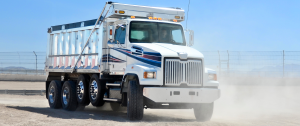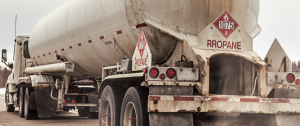
When it comes to choosing an employer in the trucking industry, one of the most important decisions you will make is whether to work for a small trucking company or a large carrier.
Each option has its own set of advantages and challenges, and what works best for one driver might not suit another. To help you make an informed decision, keep reading to find out the key differences between small trucking companies and large carriers, and find out which option will best align with your experience and career goals.
- Pay and Benefits
One of the most important considerations for any truck driver is pay and benefits.
- Large Carriers: Typically, large carriers offer more consistent pay and comprehensive benefits packages, including health insurance, retirement plans, and paid time off. They often have structured pay scales, bonuses, and per-mile rates that are transparent and predictable.
- Small Trucking Companies: Smaller companies might not have the same extensive benefits but can sometimes offer higher pay per mile or percentage-based pay. They may also be more open to negotiating pay rates, and some drivers report feeling more valued when working for smaller companies.
- Job Stability and Security
Large carriers are typically more financially stable, with a steady flow of freight and established contracts. This stability means they can often provide consistent work and fewer worries about layoffs.
On the other hand, small trucking companies may be more vulnerable to economic downturns or loss of contracts, which could lead to reduced miles or even layoffs. However, small trucking companies are also known for valuing loyalty and creating a committed workforce, helping drivers feel more secure in their positions.
- Company Culture and Personal Connections
Pay and benefits might be at the top of the list for many drivers when considering an employer, but a company’s reputation and culture can be just as significant.
- Small Trucking Companies: One of the biggest advantages of working for a small company is the family-like atmosphere. You are more likely to know your dispatcher, manager, and even the owner personally. This closer connection can make you feel more valued and less like just another number.
- Large Carriers: In contrast, large carriers can feel more impersonal. With hundreds or thousands of drivers on staff, it’s easy to get lost in the shuffle. However, some large companies are making efforts to improve driver engagement and satisfaction through dedicated support teams and communication channels.
- Flexibility and Scheduling
Small companies often offer more flexibility when it comes to scheduling. They may be more willing to accommodate your preferences for home time or specific routes. In contrast, large carriers usually follow stricter scheduling protocols to manage their vast operations efficiently.
However, larger carriers may offer a wider variety of routes and schedules to choose from, including regional, local, and long-haul options. This variety could be an advantage if you are looking for something specific.
- Equipment and Maintenance
Large carriers tend to have newer, well-maintained fleets and dedicated maintenance teams. They also are more likely to offer the most recent technology aiding CDL drivers, such as advanced GPS navigation and telematics systems. This can lead to less downtime due to breakdowns and a more comfortable ride overall.
Small companies might not have the budget for new trucks or regular maintenance, which can result in older vehicles with higher chances of issues. Alternatively, if you drive for a small company that prides itself on maintaining its equipment, you might have a dependable truck without the hassle of constant swaps or unfamiliar rigs.
- Training and Support
If you are new to trucking, large carriers often provide extensive training programs and ongoing support. They might also offer mentorship programs to help you adjust to the job and industry.
Small companies, on the other hand, might expect you to hit the ground running. Training may be minimal, and you might have to learn more on your own or from fellow drivers. At the same time, smaller companies also often make it easier to ask for support or provide direct feedback.
- Career Advancement Opportunities
With large carriers, there’s usually a clear path for career advancement, whether it’s moving into a specialized driving role, becoming a mentor or trainer, or transitioning into management or dispatch.
These opportunities might be less available in small companies, where roles are often more fixed due to size. However, a smaller team and management can give drivers the ability to advocate for themselves and ask for opportunities to develop their careers.
Which Choice Is Right for You?
Ultimately, choosing between a small trucking company and a large carrier comes down to your priorities and preferences.
- If you value stability, consistent pay, and structured career paths, a large carrier might be your best bet.
- If you are looking for a close-knit environment, flexible scheduling, and a more personal touch, a small company could be the right fit.
- Whether big or small, every trucking company is unique and should be evaluated on its own merits. No two drivers are alike, the same is true for companies.
Looking for more insights and updates on the trucking industry in 2025? Be sure to check out more posts on our blog and follow us on social media!











